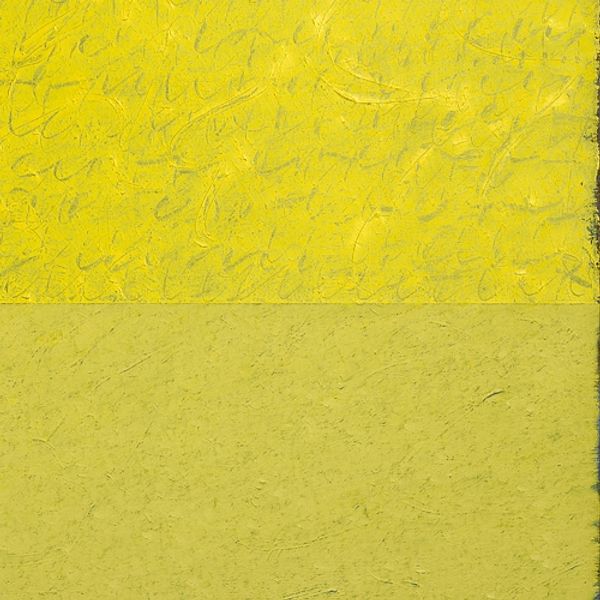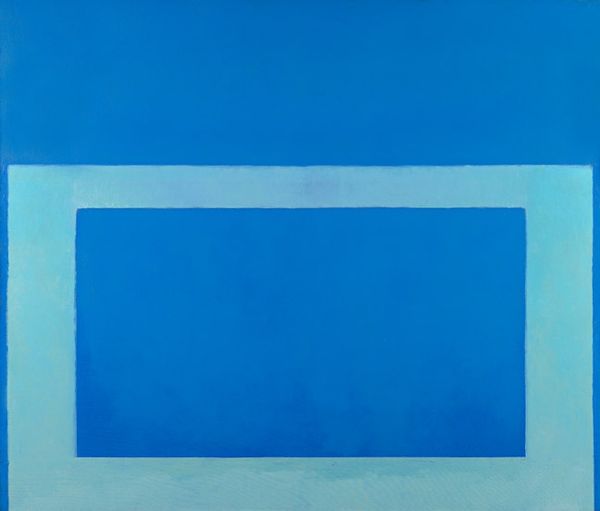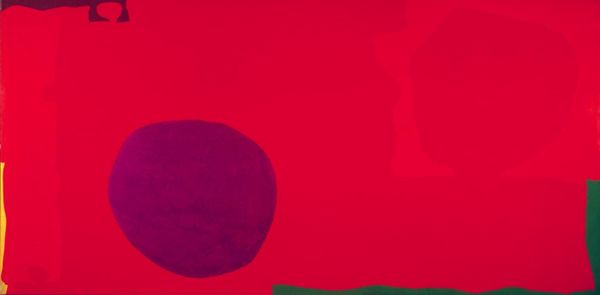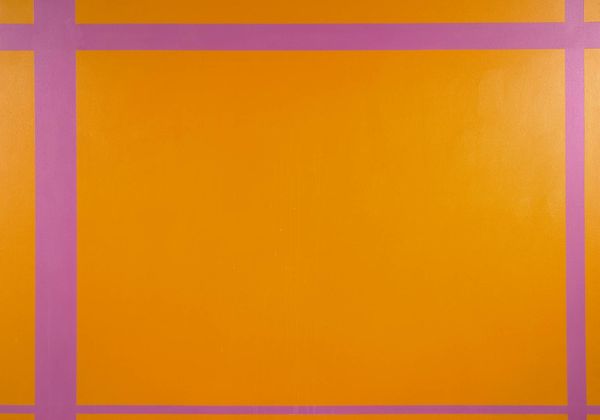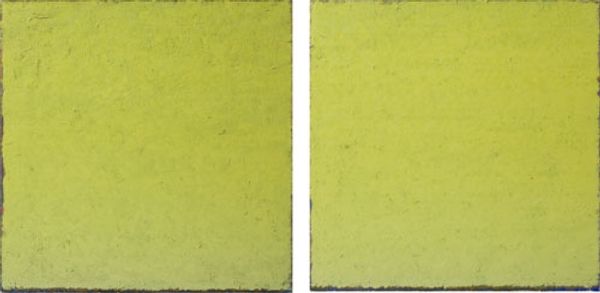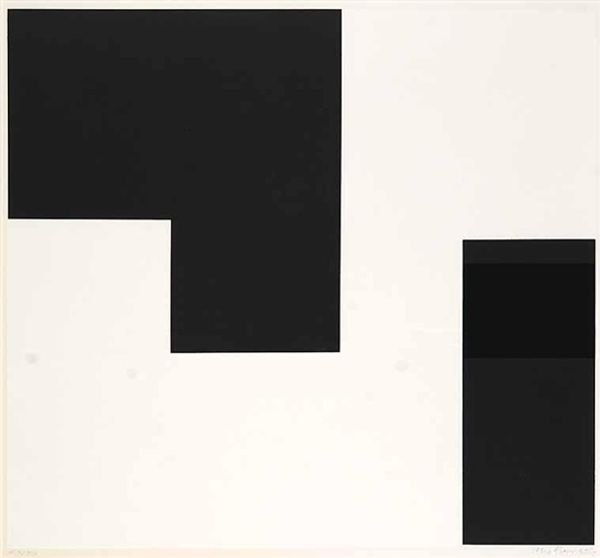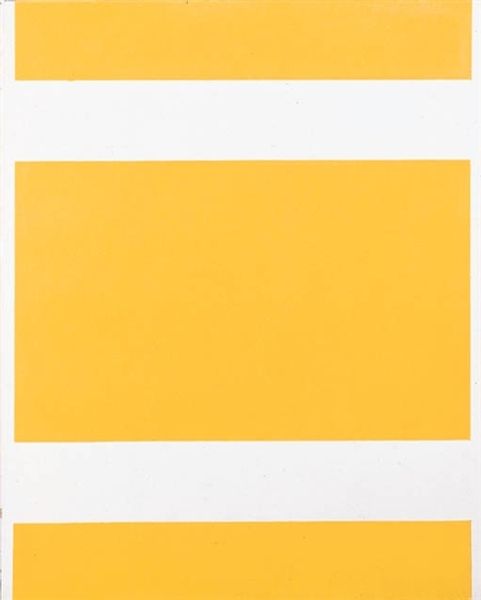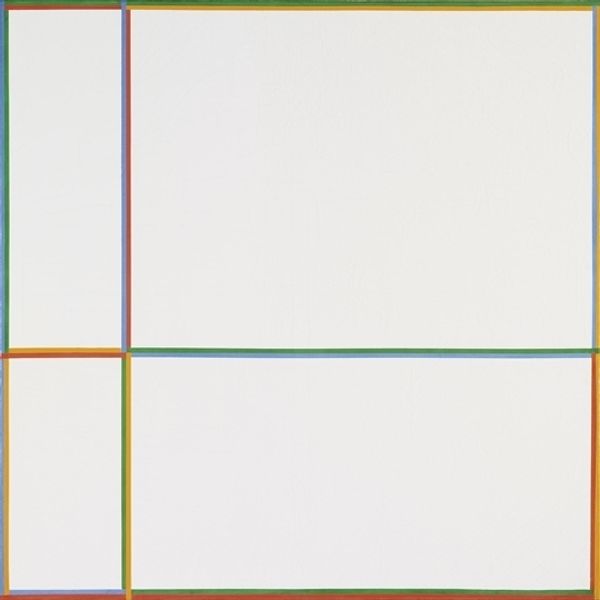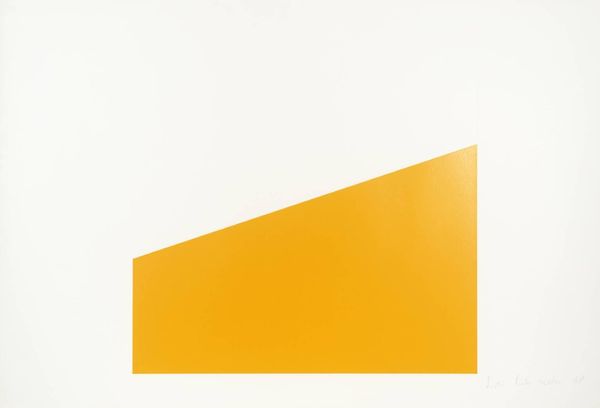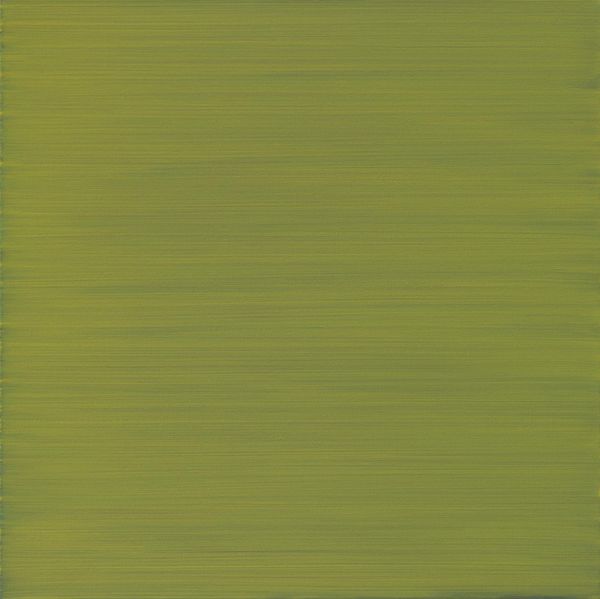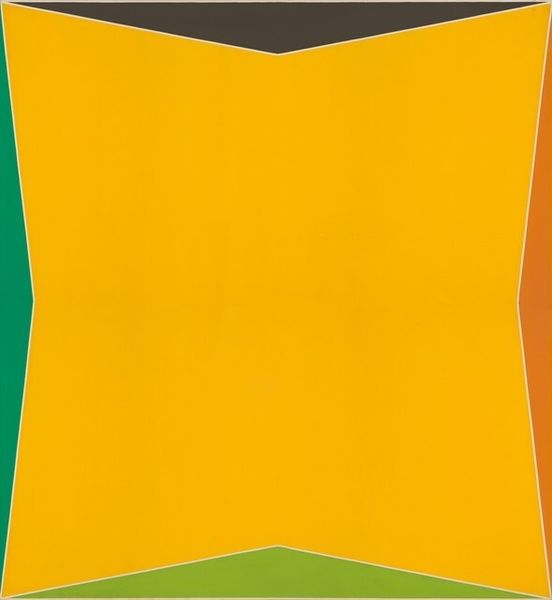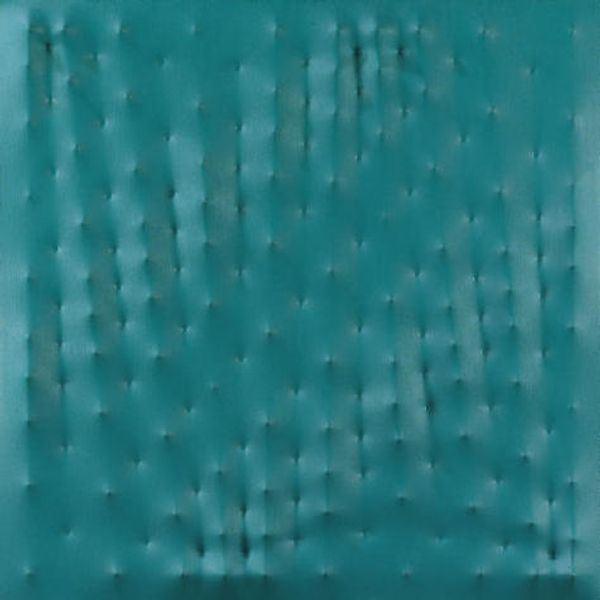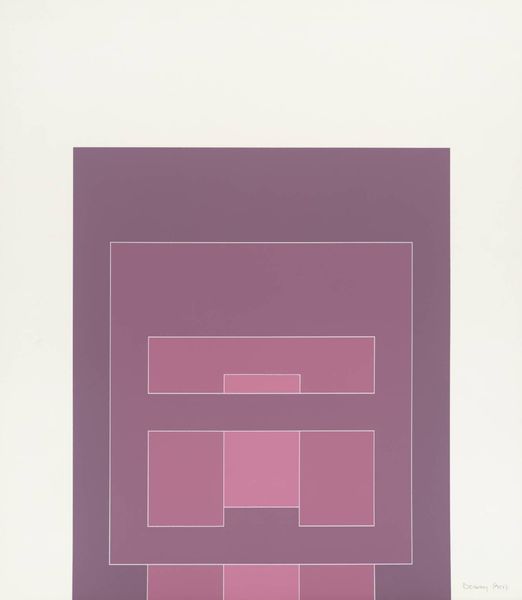
acrylic-paint
#
geometric composition
#
colour-field-painting
#
acrylic-paint
#
geometric pattern
#
geometric
#
geometric-abstraction
#
abstraction
#
modernism
#
hard-edge-painting
Copyright: Perle Fine,Fair Use
Curator: So calming! These expanses of green... I can see why Fine named it "Impatient Spring." There's a hopeful restlessness in that choice. Editor: Let's dig into that. This is Perle Fine's "Cool" Series No. 80, painted in 1963. She's working with acrylic paint here, achieving these distinct fields of colour. What I find interesting is how acrylic allowed for a flatness and precision previous paints struggled with. The clean lines become almost architectural, like color-blocked walls. Curator: Definitely. And note that "Cool" is in quotation marks in the title. Perhaps the 'coolness' refers more to the method, as it avoids gesture, narrative or heavy impasto and embraces geometric abstraction and hard-edge painting techniques? Editor: Absolutely. You know, abstract expressionism had a heavily gendered dimension; it rewarded masculine bravado, even. These younger artists were looking to expand upon the limitations around materials. Fine chose acrylics, commercial material accessible to both men and women. We see similar engagements by her peers like Helen Frankenthaler, with innovations in the handling of materials being very crucial in distinguishing the post-war New York art scene. Curator: And what about this insistent green? It reminds me of synthetic dye - the same type that would be used to create consumer goods and domestic decor during the 1960s. Fine brings this material typically confined to domestic interiors and elevates it into high art, complicating any assumptions we might have about either domain. Editor: Yes, you could also consider how these blocks and bars prefigure later minimalist practices. There is an insistent materiality present that begs the question, does this then resist a reading in terms of a purely formal exercise? We cannot look at artwork removed from gender and consumption in a patriarchal society. Curator: And by the sixties, debates were raging about the role of industry and mass production in shaping daily life. This work places itself right at the heart of that dialogue. What begins as "just" geometric abstraction starts to feel intensely social. Editor: Right, and I think it’s essential to acknowledge that many women artists in that period worked tirelessly to move painting beyond easel and gestures, but many remain unheralded. Seeing them expands our view of modern art itself. Curator: Agreed. It leaves me with a hopeful feeling. Maybe Fine's impatient spring alludes not only to seasonal change, but societal shift.
Comments
No comments
Be the first to comment and join the conversation on the ultimate creative platform.
